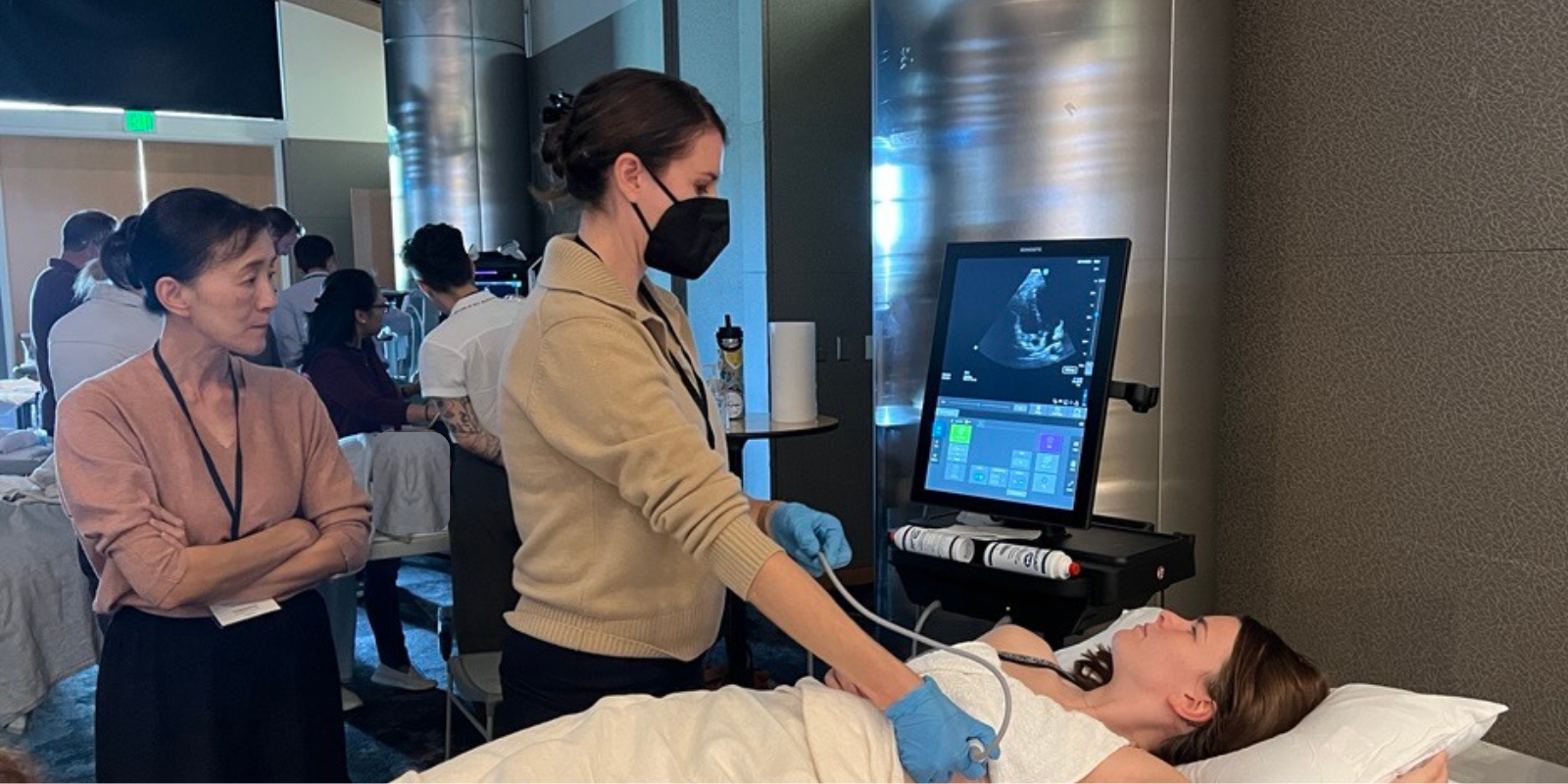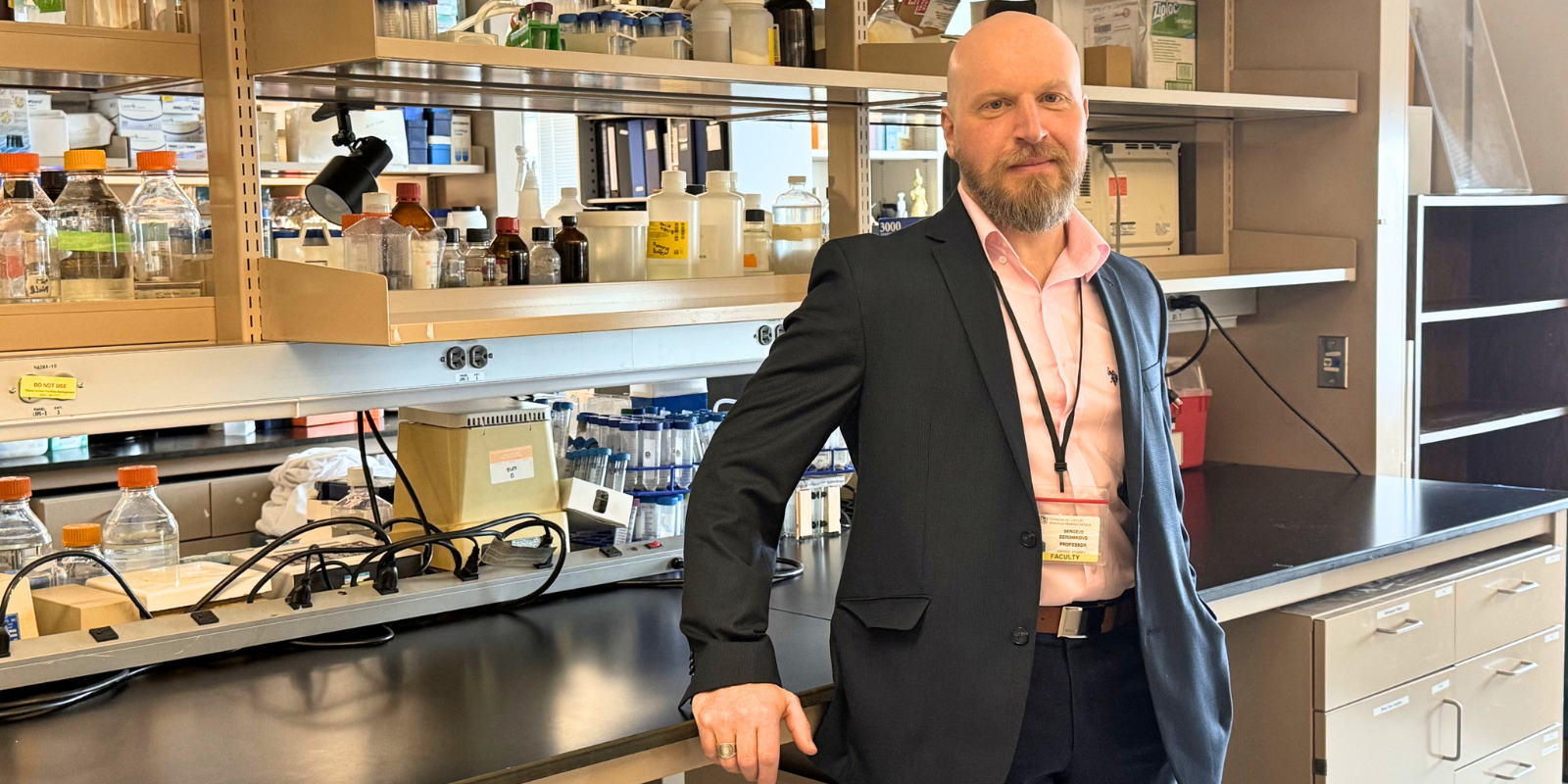For nearly a quarter century, Steven Johnson, MD, has been hopping on planes once a month, flying across Colorado to treat people living with HIV at a pair of clinics far from the big city. He figures he’s made about 200 round trips between Denver and Grand Junction and 100 journeys to Durango.
“Initially it was on turboprops,” Johnson says with a smile about his many rides over the Rockies. “Over time, the quality of the planes improved.”
Since 2000, the two CU-backed clinics in Grand Junction and Durango have provided the only specialized HIV clinical services for hundreds of miles. It’s a project that Johnson, a professor in the University of Colorado Department of Medicine’s Division of Infectious Diseases and director of its HIV/AIDS Clinical Program set in motion in the late 1990s, in partnership with Amy Davis, MD, MPH, in Grand Junction.
→ Related: Steven Johnson, MD, Describes Service on NIH COVID-19 Treatment Guidelines Panel
Previously, people living with HIV on Colorado’s mostly rural Western Slope often had to journey to far-off Denver or Salt Lake City for specialized care. Starting in 2000, thanks to Johnson and his colleagues, that care was available much closer to home at clinics run through a collaboration of the CU Department of Medicine, Intermountain Health St. Mary's Regional Hospital in Grand Junction, and CommonSpirit Mercy Regional Medical Center in Durango.
“This collaboration fits the university’s mission of being a statewide organization,” he says. “Providing this program has been very gratifying.”
‘It was bittersweet to stop’
Earlier this year, Johnson ended his monthly trip to Colorado’s Western Slope – an occasion marked by parties at the clinics where he cared for patients for 25 years. Now, he has transitioned to backing up the onsite medical staff with virtual visits.
“It was bittersweet to stop, but it was time,” he says. “It’s been a big part of my career, and a very rewarding part.”
→ Related: Injectable HIV Medication is Superior to Oral Medication for Patients Who Frequently Miss Doses, Study Finds
Edward Stenehjem, MD, MSc, interim head of the CU Division of Infectious Diseases and executive vice chair of the CU Department of Medicine, praised Johnson for the “world class HIV” care he has delivered to far-flung communities.
“Dr. Johnson is an unsung hero in our state’s response to HIV infection,” Stenehjem says. “Dr. Johnson’s dedication to our patients across the state and to the communities in which they live cannot be overstated. He allows his patients to receive care where they are comfortable, in their communities. Even though Dr. Johnson is an internationally recognized HIV clinician, he is one of the most humble, approachable servant leaders that I’ve ever met.”
 A party in May celebrating Steven Johnson, MD's 25 years of service at the HIV collaborative clinic in Durango. From left: Carole Pope, RN; Carl Salka, MD; Jennifer Rupp, MD; and Johnson. Photo courtesy Steven Johnson.
A party in May celebrating Steven Johnson, MD's 25 years of service at the HIV collaborative clinic in Durango. From left: Carole Pope, RN; Carl Salka, MD; Jennifer Rupp, MD; and Johnson. Photo courtesy Steven Johnson.
‘A big part of my residency’
HIV, or human immunodeficiency virus, primarily attacks the CD4 lymphocyte, weakening an infected person’s ability to fight off infections and cancers. If left untreated, HIV can progress to AIDS (acquired immunodeficiency syndrome), which can leave a person vulnerable to opportunistic infections, including pneumonia, candidiasis, toxoplasmosis, and tuberculosis.
An estimated 1.1 million people in the U.S. were living with HIV in 2022, and nearly 38,000 new cases were diagnosed that year, according to the U.S. Centers for Disease Control and Prevention.
When the first cases of AIDS were described in 1981, and HIV was identified as the cause in 1983, there was no treatment. A diagnosis amounted to a death sentence. The death toll climbed steadily year by year, reaching a peak of about 50,000 U.S. deaths in 1994 and again in 1995, when AIDS was the number one cause of death for people ages 25 to 44.
In 1984, after earning his M.D. at Northwestern University on a U.S. Army scholarship, Johnson came to what was then Fitzsimons Army Medical Center – today the CU Anschutz Medical Campus – for his residency as part of the U.S. Army Medical Corps.
→ Related: Doctors of Old ‘Fitz’ Reunite for First Time Since Army Base Closure
“The HIV test was developed in 1984, and the Army was testing a lot of people – active duty, retirees, dependents, and other beneficiaries – who turned out to be HIV positive,” Johnson says. “They were referred to the major medical centers for evaluation, and one of them was Fitzsimons, so that was a big part of my residency.”
It was at Fitzsimons that Johnson encountered “a very impressive” infectious disease physician, Col. Shannon Harrison, MD, who had arrived from a posting in Kenya to set up a clinic for HIV/AIDS patients. “This was at a time when people were afraid to go into the same room as somebody with HIV. He would examine them, he would draw blood from them, and he would hug them. He was very inspirational.”
Launch of the clinics
Treatments for HIV began to emerge in the late 1980s and got progressively more effective. There still is no cure, but with treatment, many people today live long lives with the virus, with the potential to live a normal life span.
→ Related: A Celebrity Weight-Loss Drug Helps People With HIV Fight Fatty Liver, Study Shows
In 1994, Johnson left the Army and joined the CU School of Medicine faculty. A few years later, planning began for the collaborative HIV clinics. “In those early days, there was a recognition that to have expert HIV clinics around the state, with a lot of different care elements present, was a good model because Colorado is geographically large and it’s difficult for people to travel back and forth, especially in winter,” he says.
Those early talks involved Johnson and his CU colleagues, the Colorado governor’s AIDS council, and a local group of stakeholders in Grand Junction, including Davis. “With our help, they put together a Part C grant under the Ryan White HIV/AIDS Program that led to establishment of the clinics in Grand Junction and Durango,” he says. More recently, additional funds for HIV care came from the Telluride AIDS Benefit, a fundraising nonprofit.
A tag-team approach
Davis, the family medicine physician affiliated with St. Mary’s Regional Hospital, has been the Grand Junction clinic’s local physician partner from the beginning, Johnson says. At the Durango clinic, he collaborated with two infectious disease-trained physicians, initially Carl Salka, MD, followed by Jennifer Rupp, MD.
"Dr. Johnson understood well the concept of capacity building such that we could then have a sustainable project to care for our patients on the Western Slope," says Davis, who serves as medical director of the Western Colorado HIV Specialty Care Clinic in Grand Junction. She praises Johnson's "desire to improve the health of this community."
At the clinics, with Johnson providing HIV care, patients can also get primary care and see mental health professionals, nurses, and case managers. Between visits, Johnson has been available remotely to lend advice involving HIV patients, including urgent care and emergencies.
Many of the patients Johnson sees at the clinics have been living with HIV for years, although sometimes they have been newly diagnosed. Often he deals with questions about changing a patient’s combination of HIV treatments.
“I typically fly down the day before, and often we have a get-together dinner to talk about who’s going to be part of the clinic the next day,” Johnson says. “And then it’s seeing patients all day, with the local physician and me in the room together, which is a great luxury. Often we tag-team it, so when it’s about HIV and its treatment or other infectious diseases, I’ll do the talking, and when it segues to primary care, the other physician will do the talking.”
‘You know when it’s time’
Johnson says his personal visits to Grand Junction and Durango ended in part because the Ryan White grant funds that supported his involvement were meant to build capacity for treating HIV in local communities, and that goal has been achieved through teams of local providers who will keep the clinics in operation.
“We reached the 25-year point, and to me it felt right to stop,” he says. “You know when it’s time.”
While his monthly plane flights over the Rockies have ended, Johnson will be available to provide virtual consultation with the Western Slope clinics. Johnson continues to travel regularly to HIV clinics in Fort Collins and Pueblo operated under different Ryan White-funded programs.
Davis says of Johnson: "His career is marked with expertise in the field but also with passion for assisting us with our growth. He is driven by excellence but does so with remarkable humility. I consider him a mentor, a colleague, and a friend and could not imagine a better individual with whom to walk alongside."
There are a few patients at the Western Slope clinics who Johnson has seen for the entire 25 years he’s made his monthly trips.
“It was very poignant and sad to say goodbye to them,” he says.
Photos at top: Center, Steven Johnson, MD, and Amy Davis, MD, at the celebration in June of their 25 years of collaboration on a specialized HIV clinic in Grand Junction. Left and right: Awards presented to Johnson for his 25 years of service at HIV clinics in Grand Junction and Durango. All photos courtesy Steven Johnson.




.png)